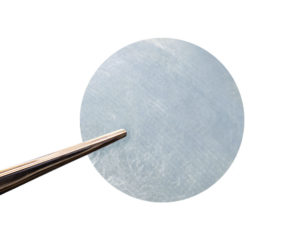
Why Surgenex Amniotic Membranes Are the
Right Treatment to Add to Your Practice
Treating corneal issues with Surgenex Amniotic Membranes is a capability that countless doctors have used to increase revenue and improve outcomes for patients in their practices. One of these practitioners, Dr. Donna Shotwell, an OD from Sarasota, FL, was kind enough to talk to us about the changes she’s seen in her practice since her adoption of this treatment.
Read on to learn more about Dr. Shotwell’s experience with amniotic membranes and why she doesn’t hesitate to recommend them to her colleagues:
The Case for Amniotic Membranes
“It’s definitely improved the number of patients we can treat.”
Dr. Shotwell said she feels strongly about the potential of amniotic membranes in general. When she started offering membrane treatments for patients around five years ago, she said the patient response was noticeable immediately: “Most were very happy because they had little success with other procedures and treatments.”
Knowing that there’s an option that can improve their conditions — available right in their eye doctor’s office — is a huge boost for a patient. As Dr. Shotwell puts it, “having a patient with severe dry eye or corneal damage, they are thrilled to hear that there’s a treatment available that provides quicker relief and enhances the healing process.”
Surgenex vs. the Alternatives
“[Surgenex] is my go-to amniotic membrane now”
After a few years of doing treatments with one type of amniotic membranes, though, Dr. Shotwell learned that not all membranes are created equal.
“I’d originally been using a lot of [a competing brand],” she said. “Unfortunately, it was very uncomfortable for patients.” This is because the brand she was using — a major competitor of Surgenex that makes cryopreserved membranes — involves the insertion of a ring in the patient’s eye when using the membrane. With a large number of older patients, she found that this was prohibitively uncomfortable for them.
This was the main reason she decided to try the Surgenex membranes, which are dehydrated, don’t need the ring when being inserted, and have a much longer shelf life: “I originally started with the Surgenex about a year ago. It’s easier to place them on the cornea, and I’ve gotten the same results if not better than [the cryopreserved membranes].”
When asked about the biggest difference between the two, she says it’s about comfort: “The patients who I’ve used both on are so much happier with [Surgenex]”
Advocating for Surgenex Membranes
“It’s not much different than simply putting a contact lens on a patient’s eye”
Since she started using Surgenex membranes, Dr. Shotwell said she’s had discussions with other doctors about whether they should follow her lead. Overwhelmingly, she tells them what a major impact it’s had on her practice.
The one thing she makes sure to communicate to her colleagues is how easy this type of treatment is to learn how to perform. “There’s some training, but I felt very comfortable after the first day,” she said.
Additionally, the potential to improve outcomes for her patients make it something she recommends to every practitioner with whom she discusses amniotic membranes. As she told us, “I look forward to doing amniotic membranes, because I know the success of how well the cornea will heal, and how much more comfortable the patient will be.”
Advocating for Surgenex Membranes
“It’s not much different than simply putting a contact lens on a patient’s eye”
Since she started using Surgenex membranes, Dr. Shotwell said she’s had discussions with other doctors about whether they should follow her lead. Overwhelmingly, she tells them what a major impact it’s had on her practice.
The one thing she makes sure to communicate to her colleagues is how easy this type of treatment is to learn how to perform. “There’s some training, but I felt very comfortable after the first day,” she said.
Additionally, the potential to improve outcomes for her patients make it something she recommends to every practitioner with whom she discusses amniotic membranes. As she told us, “I look forward to doing amniotic membranes, because I know the success of how well the cornea will heal, and how much more comfortable the patient will be.”
